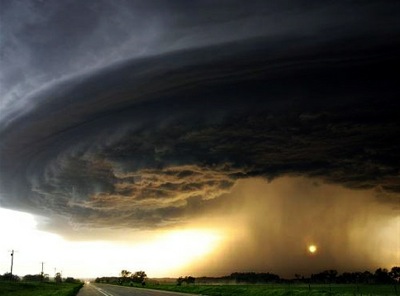 Photo: Bruna CostaRemember how we were saying that what happened in Brisbane could happen to us? That might get tested sooner than you think. In the not-too-distant future, California could be at risk for Old Testament-level storms that could do four to five times the damage of a major earthquake. A recent scientific conference took a good hard look at this possibility, and what could be done.
Photo: Bruna CostaRemember how we were saying that what happened in Brisbane could happen to us? That might get tested sooner than you think. In the not-too-distant future, California could be at risk for Old Testament-level storms that could do four to five times the damage of a major earthquake. A recent scientific conference took a good hard look at this possibility, and what could be done.
Forty days and forty nights: No, really. That’s how long a “superstorm” could last, according to the Associated Press:
A storm scenario released by the U.S. Geological Survey this week says such a storm has the potential to cause flood damage to a quarter of the houses in the state.
The report describes a storm lasting more than 40 days and dumping up to 10 feet of rain.
Prepared to a fault: Californians are prepared for quakes, reports The New York Times, but not for floods of this magnitude:
The existing engineering systems that dispose of floodwater are so efficient that the effects of moderate storms often go unnoticed, [U.S. Geological Survey scientist Lucy] Jones said. So while many Californians know whether they live or work close to an earthquake-prone fault and what to do should there be a serious quake, few realize that the state could be hit by storms that at their worst could rival the largest hurricanes that devastate the Gulf Coast and the southeastern Atlantic Seaboard.
What are the chances? Some meteorologists are dismissing these concerns as hooey, but then, a lot of meteorologists don’t believe in climate change. USGS calls the situation “hypothetical, but plausible,” and says that such catastrophic storms happen in the California area about once every 100 to 200 years. The last one was 1861, so we’re smack in the middle of that time frame — and at any rate, it’s never too early to make plans so we don’t get caught with our pants down.
What can you do? Start building your ark and gathering your animals. Seriously, though, walkability and other sustainable living practices can do a lot to help communities weather a disaster. Maybe now — with two giant floods still ebbing and more perhaps on the way — is a good time to think about building a resilient infrastructure.



